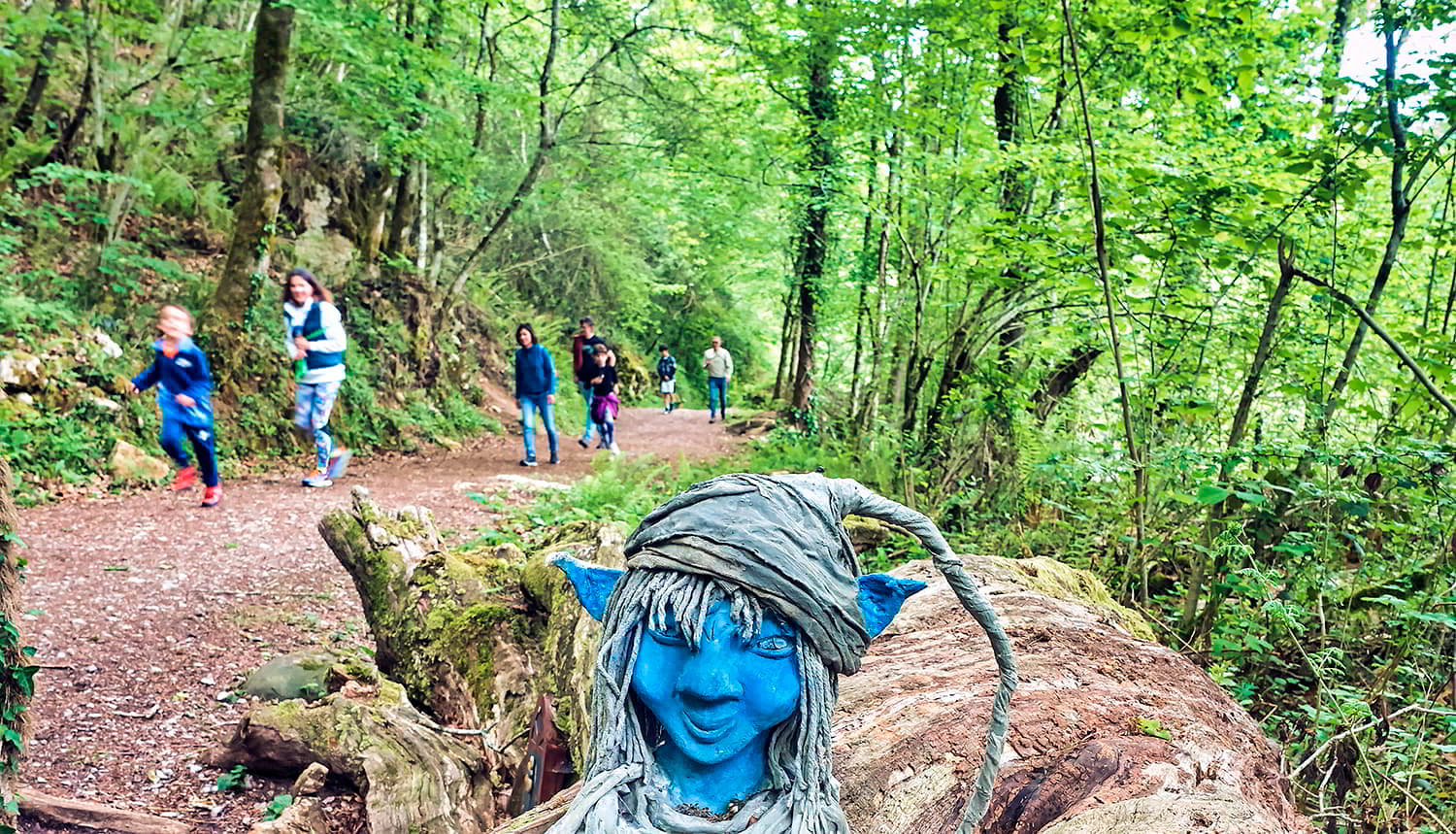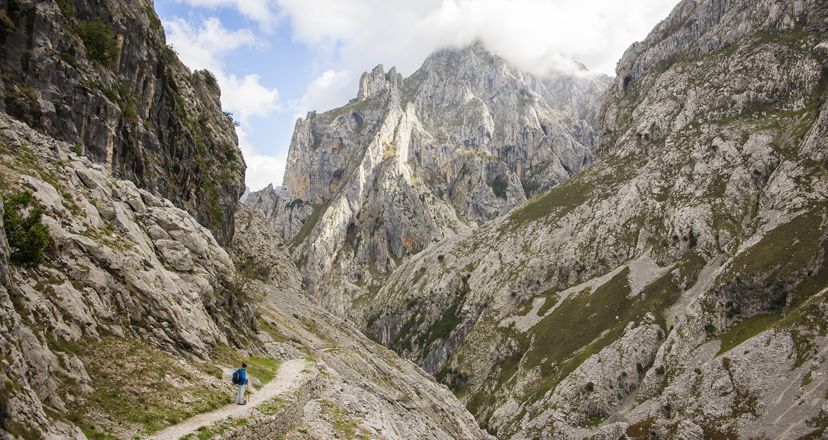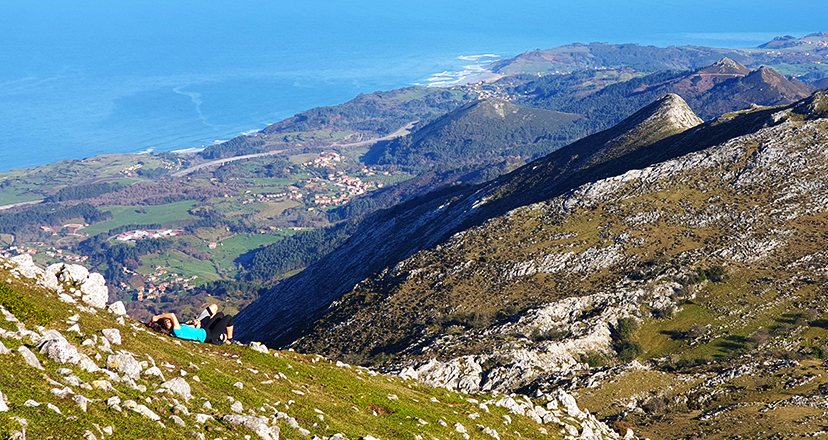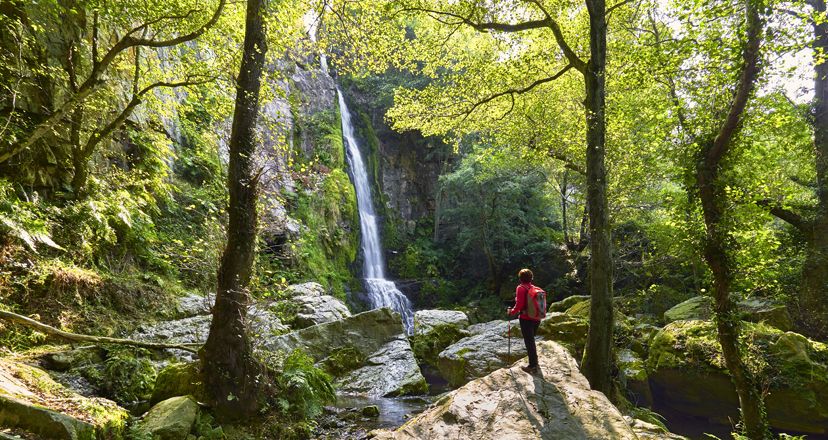Back Hiking with the family: 6 routes with recreational areas in Asturias
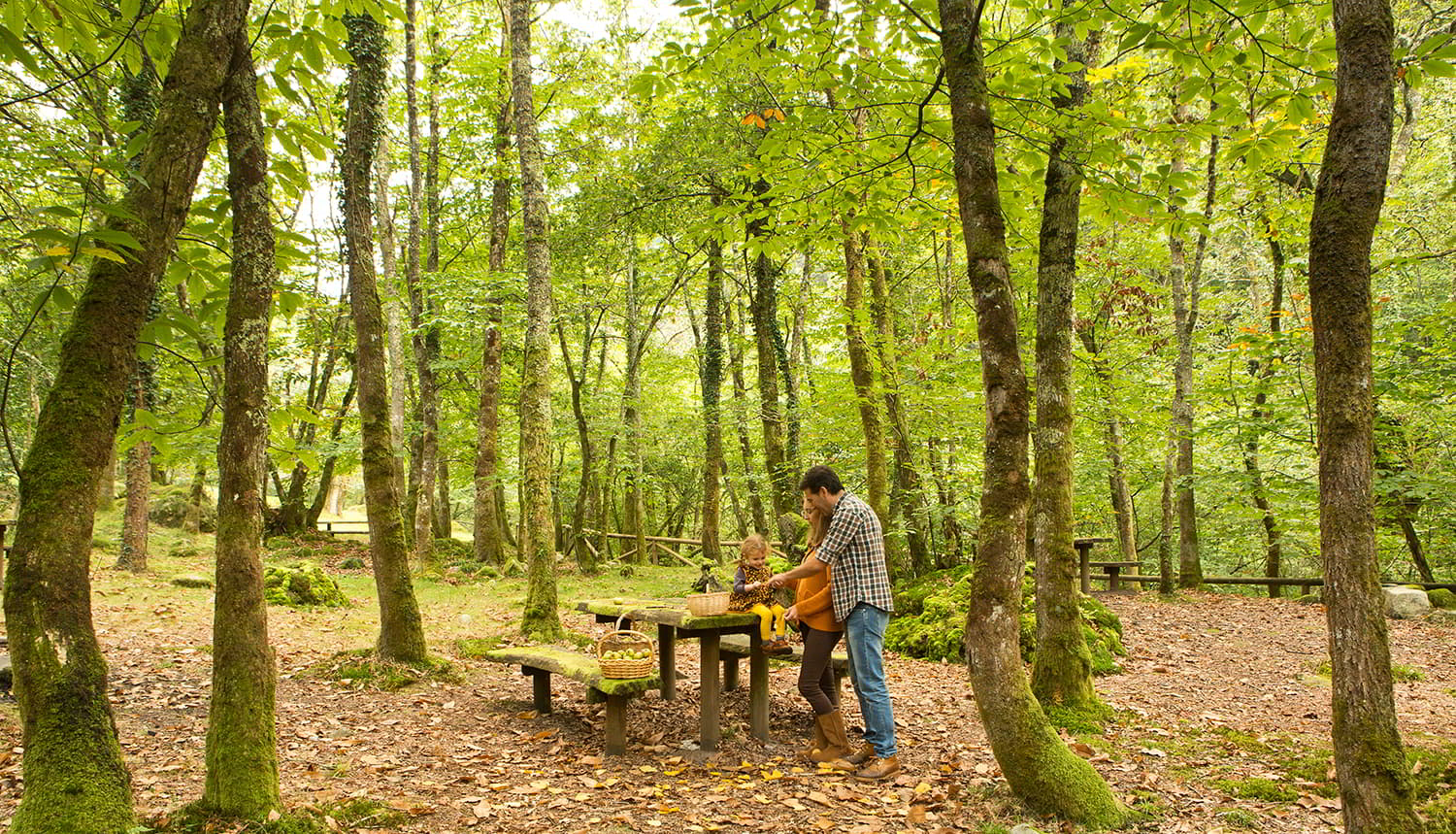
Hiking with the family: 6 routes with recreational areas in Asturias
"Asturias offers nature lovers many easy hiking routes, but not all of them start from pleasant recreational areas. Here are 5 easy routes for the whole family that meet this requirement".
Asturias has large recreational areas and natural spaces where the whole family can enjoy a pleasant day in contact with nature. In addition to the extensive coastline, dotted with spectacular sandy beaches stretching from east to west, there are idyllic mountain landscapes, where gentle meadows give way to thick forests of beech and sessile oak. These protected areas are perfect places for family hiking routes, for all tastes, which allow you to carry out fun plans with children in ideal spots.
Below, we will walk together along 6 simple hiking routes in which nature is the main protagonist, and which can be started from one of the many recreational areas in Asturias.
Foces del río Infierno (recreational area of La Pesanca)
We will immerse ourselves in the beauty of the Foces del Río Infierno, exploring the natural environment from the bucolic La Pesanca Recreational Area. One of the best things to see in Piloña, near the town of Riofabar, is this area, which can be reached by a local road, located in a fertile plain surrounded by lush vegetation of ancient oak, chestnut and hazelnut trees that give way to an infinite landscape.
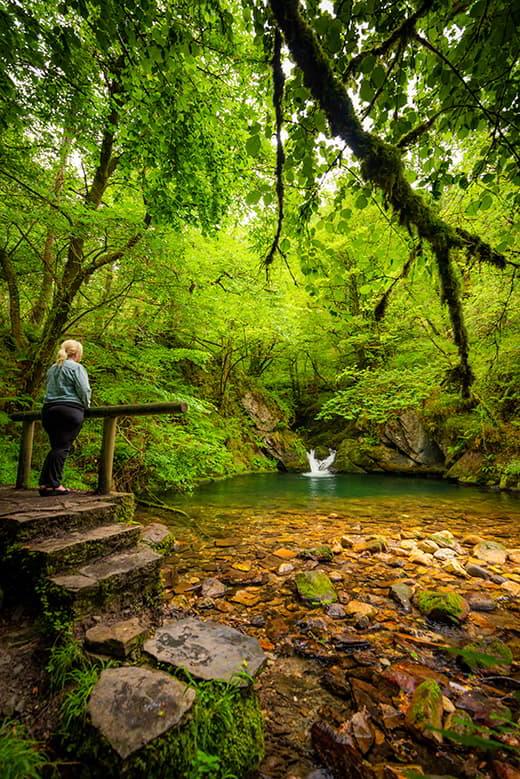
But, without a doubt, the best way to get to know this piece of paradise and fall in love with it is to take a simple walk from the recreational area. From La Pesanca, there are several hiking routes that lead to different natural enclaves along a main track that branches off towards the Collado de Traslafuente pass and the Vízcares peak; Los Tornos de Pandemules, in the Redes Nature Reserve, or towards the Foz de los Moñacos, also in Caso. It is not necessary to undertake the complete section of any of them, as the easiest one is a total of 14 km and 600 m of slope. It is enough to consider taking a short walk with the children along the Infierno river gorge, depending on the conditions and the physical effort you wish to make. To do this, you just have to follow the crystal clear waters of the river that plunge into an amazing gorge of slate walls, where the erosion of water and wind has carved out the gorge at will and through which small waterfalls and cascades of overwhelming beauty slide down.
Camín de la Reina (Trambesagües recreational area)
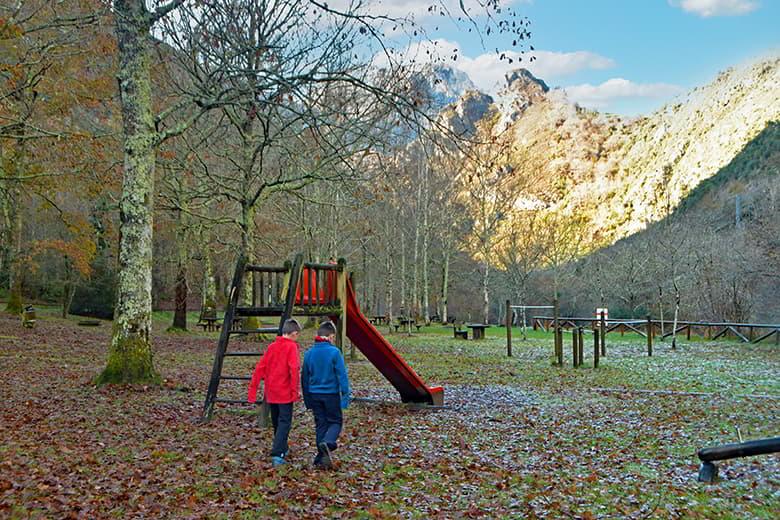
We will discover the Camín de la Reina, starting at the Trambesagües Recreational Area (in the council of Amieva) and exploring its historical and natural corners. The first thing that stands out in this recreational area is its size and the fact that it has tables, barbecues, a children's area and a fountain. There are also a large number of old Asturian constructions known as "corripas". These buildings with circular foundations were formerly used to store chestnuts with their hedgehogs. They were covered with leaves and stubble in October so that they could be eaten until spring.
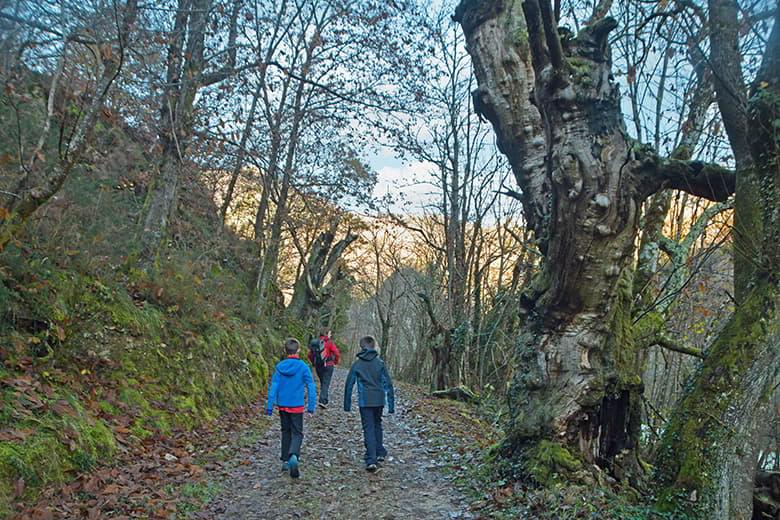
Taking advantage of this ethnological vestige, we will take the pleasant Camín de la Reina, named after the monarch Isabella II of Castile, who used this ancient Roman road to travel to Covadonga. And, although it is not necessary to go to the heart of the Picos de Europa National Park, we can take a walk surrounded by oak, beech and ash trees to the nearby village of Precendi, following the course of the river Ponga, which flows a few metres downstream into the Sella. In this way, we will pass by the Beyu Pen gorge , near the village of Santillán, which is another route through Asturias that we recommend, although this one is more physically demanding than the Camín de la Reina.
Deva path (La Brañona recreational area)
We will immerse ourselves in the path of the Deva, exploring its enchanting landscapes from the La Brañona Recreational Area, located in a bend of the Deva River and hidden among lush vegetation. In Asturias there are many easy routes for family hiking and one of them is the one that starts in the recreational area of Panes, which has wooden tables, swings, a fountain and barbecues.
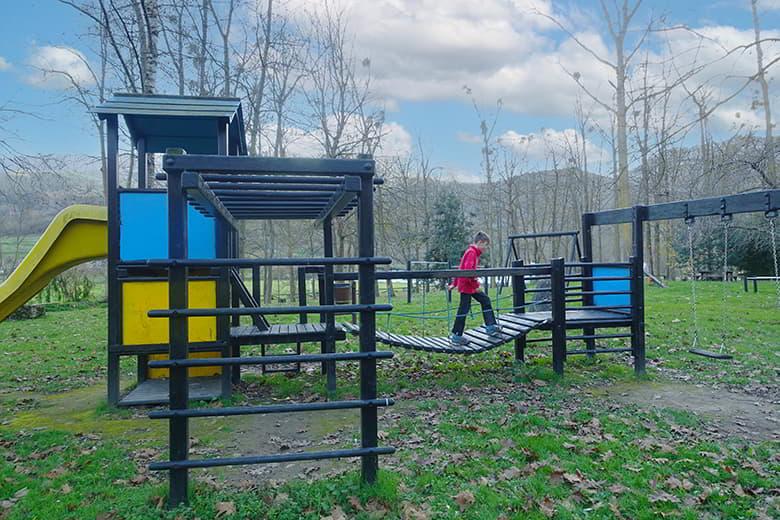
This is a circular route of about 15 km with hardly any gradient and with excellent signposting that runs along the left and right banks of the river Deva-Cares, passing through some of the most outstanding natural resources of Asturias such as the Palaeolithic cave of La Loja, the Palace of San Román or the Romanesque church of San Juan de Ciliergo, which dates back to the end of the 13th century.
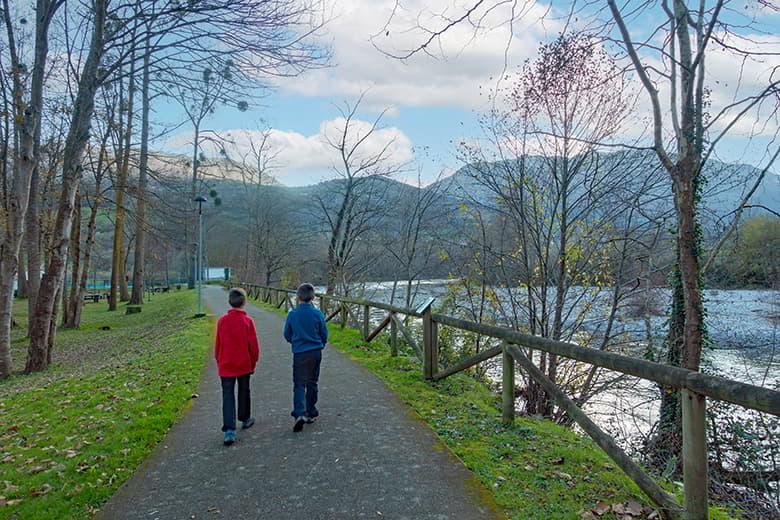
But if you do not want to do such an extensive route, there is the possibility of doing a circular route of 2.5 km from the recreational area along the fluvial path of the Arboretum of Deva, which has an ecosystem of forests typical of the Picos de Europa. This option is much simpler than the previous one and can be done by bicycle, with very young children, with a pushchair or with people with reduced mobility.
Coastal path in Muros de Nalón (Espíritu Santo viewpoint recreational area and La Atalaya recreational area).
We will explore the Senda de los Miradores de Muros de Nalón from the Mirador del Espíritu Santo Recreational Area and the La Atalaya Recreational Area, enjoying panoramic views and unique experiences. From both areas, which are actually two marvellous vantage points overlooking the Cantabrian Sea, we can enjoy a simple hiking route along the coastline on a pedestrian path. It doesn't matter whether we head east or west, because, in either case, unbeatable panoramic views are guaranteed.
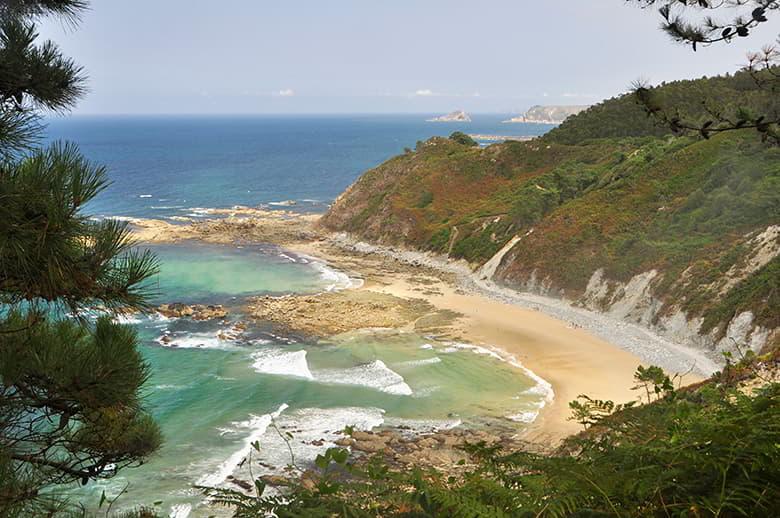
On the east side of the path we have the mouth of the river Nalón in the Cantabrian Sea and the wide beaches of El Sablón and Los Quebrantos. Meanwhile, if we opt for the west side, the Nalón Viewpoints path will offer us breathtakingly beautiful views of the islets of El Paso and La Ñera until it ends at the beach of Aguilar. This coastal path runs along one of the most spectacular stretches of the central and western coast of Asturias.
Cabo Blanco Route (Porcía beach recreational area)
We will start the Cabo Blanco route from the Porcía Beach Recreational Area (in the council of El Franco), exploring this Asturian cape and its surroundings. Although the sandy area practically disappears at high tide, it is one of the most beautiful spots on the western coast of Asturias. The panoramic views of the coastline from the tables scattered along the mountainside that ends in the sea are very beautiful.
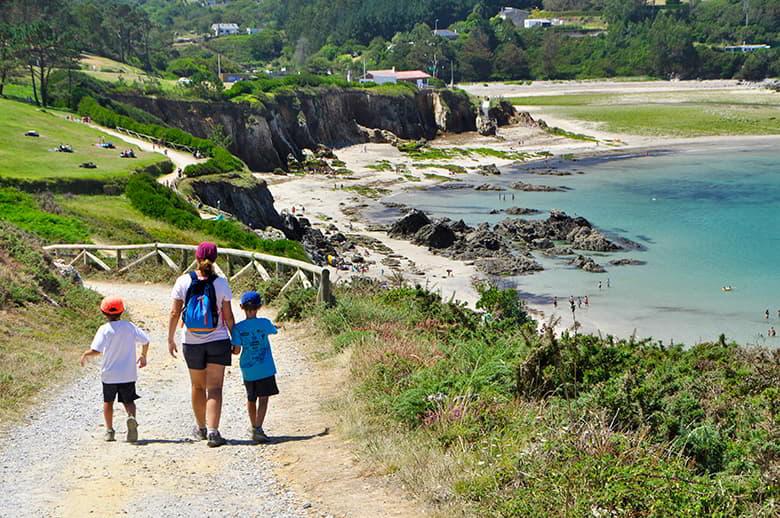
In addition, if you feel like walking, you can take a simple and well-signposted hiking route that starts from the recreational area and heads towards the Atalaya viewpoint. From this sea outcrop, you will have beautiful views of the Castelos and Chisliqueira islets and the Amortiza cliffs. We can continue along the coastal path, which has no difficulty whatsoever, to the vicinity of the defensive fort of Cabo Blanco, which dates from the 8th - 1st centuries BC, and which is not the only fortified settlement of Roman Iberia in the area, as the fort of Coaña is also nearby. Once we have finished this walk from the Cabo Blanco projection, the only thing left to do is to return to the recreational area of Porcía beach.
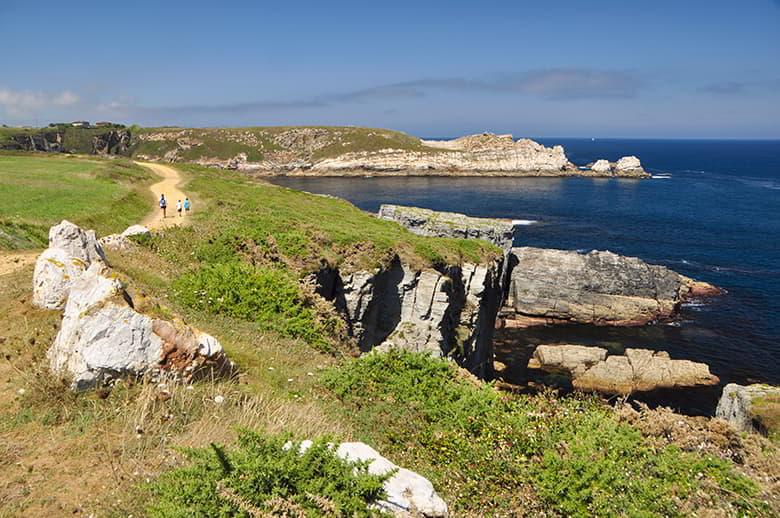
This is one of the most beautiful trails you can do in Asturias with children, with a path that goes far enough away from the cliffs to be safe, but at the same time allows you to enjoy beautiful panoramic views of the Cantabrian Sea.
Castro route (La Malva recreational area)
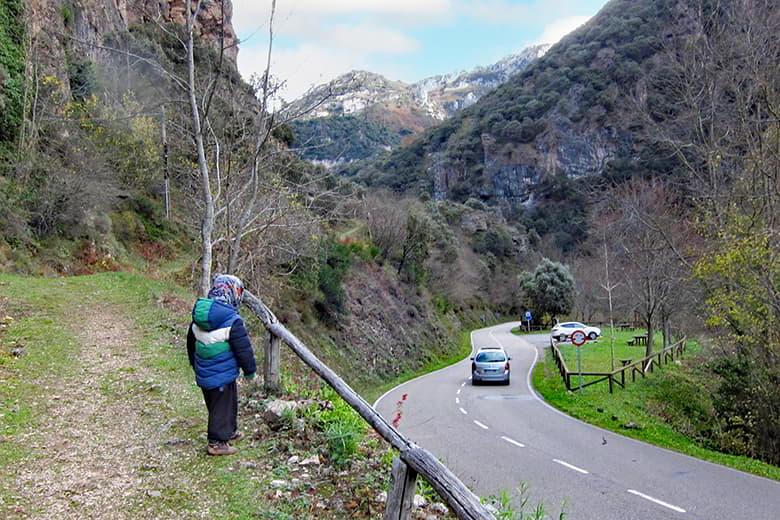
We will conclude by exploring the Castro Route from the La Malva Recreational Area - one of the best things to see in Somiedo -, discovering the charms of this historic itinerary that is located near the La Malva hydroelectric power station, which is more than 100 years old. At certain times of the year you can visit this building, which is an outstanding example of early 20th century industrial architecture.
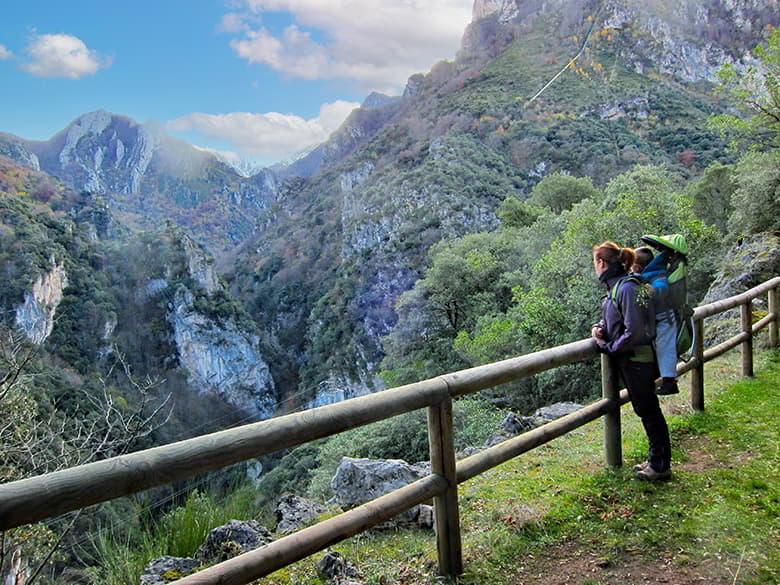
But, in any case, we encourage you to walk at least part of the Castro route, which starts by gaining height through an arboretum. In this way, you will discover numerous species of trees that have adapted to the climate and soil of this enclave in the Somiedo Natural Park, where holm oak and deciduous forests of ash and chestnut trees predominate. With little difficulty, we will reach the Malva cave, from where we will have splendid views of the valley of the river Pigüeña and where we can end the route, unless we wish to go to the charming village of Castro. However, bear in mind that there are 4 km between the recreational area and the village, and that the return journey must be made by retracing the path or along the road that joins the two sites.
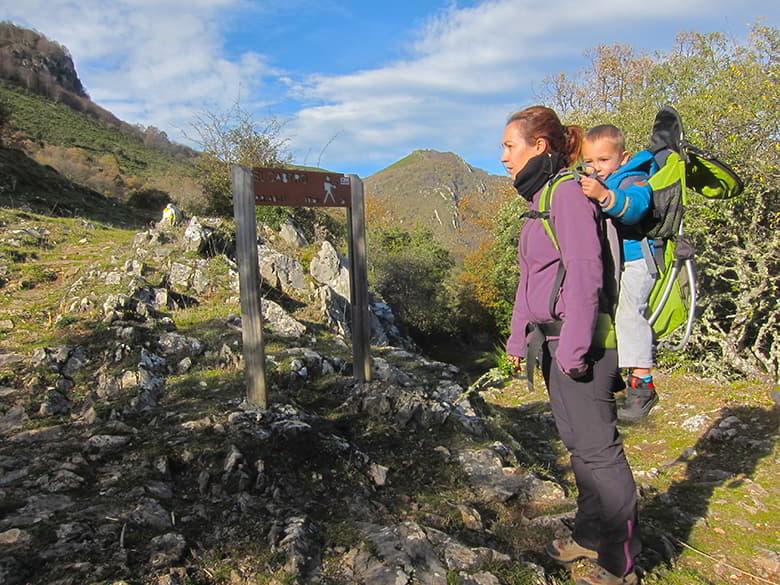
As you can see, Asturias is a paradise for nature and nature lovers. Here are 6 easy hiking routes that can be done with young children from pleasant recreational areas, but there are many more. Are you up for discovering them?
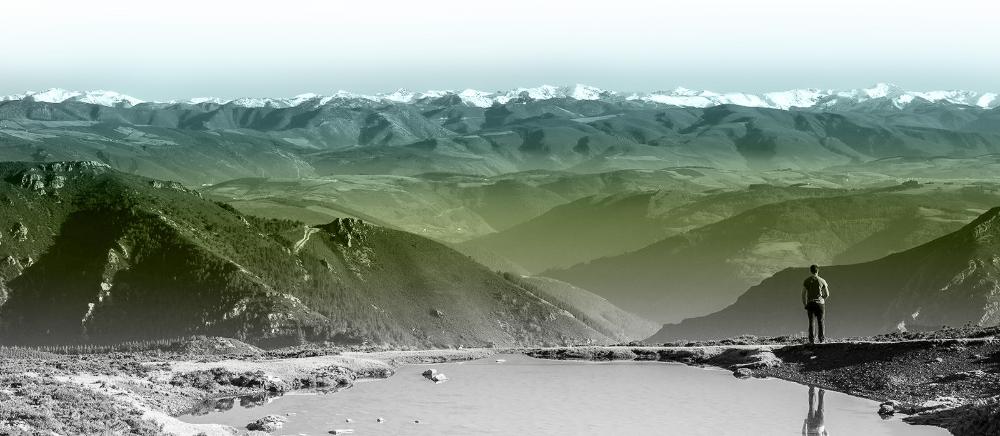
Subscribe to our newsletter and take advantage of offers, discounts, and news
Subscribe

